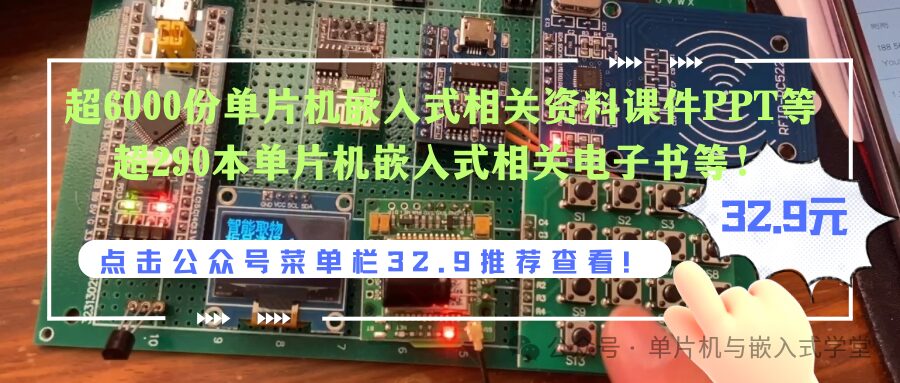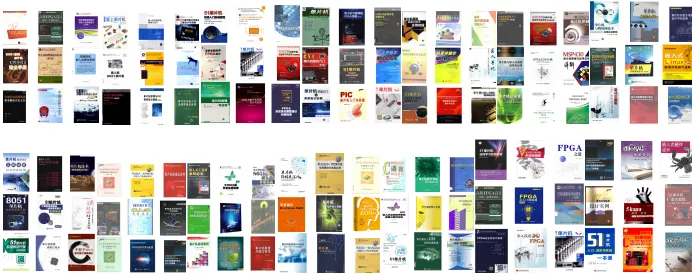

The learning and application of microcontrollers is rapidly rising in factories, schools, and enterprises. Engineers and technicians who are accustomed to traditional electronics face new challenges. If they cannot learn microcontrollers in a short time, they will inevitably be left behind by the times. Only by bravely facing reality, challenging oneself, enhancing learning, and striving to integrate microcontroller technology in a short time can they keep pace with the times.However, many learners (including students) often struggle to grasp the essentials. Their initial enthusiasm quickly turns into frustration and abandonment, leading to a love-hate relationship with microcontrollers. Learning microcontrollers is not as intuitive as learning traditional digital or analog circuits because, in addition to “hardware,” there is also a “software” factor.This “software” factor makes it difficult for many beginners to understand the working process of microcontrollers. They cannot comprehend why sending a few numbers can control a light bulb to turn on/off or a motor to change speed. This leads to a sense of “mystique,” “awe,” and even “fear” towards microcontrollers, hindering their enthusiasm and interest in learning, which has contributed to the belief that “microcontrollers are hard to learn” in society.Having interacted with numerous electronics enthusiasts and students over the years, I understand the difficulties they encounter while learning microcontrollers. Moreover, I myself have grown from an electronics enthusiast to an engineer, and this process inevitably involves learning, exploring, practicing, and progressing. Therefore, I deeply understand that the difficulty in learning microcontrollers mainly comes from not grasping the essentials and the challenge of getting started. Once a shortcut to learning is found and one can initially master programming techniques and achieve practical results, confidence will undoubtedly increase. Subsequently, when advancing to new depths and breadths, one will feel less anxious and more at ease, able to expand their knowledge step by step. Here, based on my experience, I will discuss learning methods, techniques, and how to learn microcontrollers in a short time.The most effective way to learn microcontrollers is to balance theory and practice.For a beginner in microcontrollers, if they follow a textbook-style learning approach, starting with a pile of instructions and terms, and after studying for a long time still cannot understand the purpose of these instructions or what practical effects they produce, they may quickly find it tedious and give up. Therefore, combining learning with practice is a good method. Learning and practicing simultaneously, progressing step by step, will allow them to understand, master, and root the instructions in their minds in no time, even making them “deep-rooted.” In other words, after learning a few instructions (not focusing on quantity but on understanding), the next step should be to conduct experiments. Through experiments, they will experience the control effects of the instructions they just learned, seeing (light) and hearing (sound) the results, which will deepen their understanding of how instructions convert into signals to control electronic products. To put it bluntly, microcontrollers are more about experimentation than just learning; moreover, conducting experiments is itself a learning process. Therefore, the method of learning while practicing is particularly effective. Many readers have been able to develop simple products (such as neon light advertising boards, accumulators, etc.) after 3-6 months of study.Learning microcontrollers requires reasonable time management and perseverance.Learning microcontrollers cannot be a case of “three days fishing, two days drying the net.” It requires perseverance and determination. After learning several instructions, one should conduct experiments promptly to integrate their knowledge rather than waiting days or weeks to do so, as this leads to poor results or forgetting what has been learned. Additionally, one should be prepared for a “protracted battle” mentality, not just studying for a few days when interested and then taking weeks off when disinterested. A crucial aspect of learning microcontrollers is persistence.Learning microcontrollers should employ a cyclical learning method to solidify knowledge.I have previously conducted a seminar titled “Hands-On Teaching of Microcontrollers” in other publications. This seminar starts at a low entry point, and many friends find it easy to learn, quickly completing and understanding the seminar from start to finish. However, after a few months, they tend to forget the specific functions of the instructions when developing products. According to modern scientific research, knowledge that has only been briefly learned is barely better than superficial understanding. Therefore, a better approach is to revisit the material after a period of time (1-2 months), and through repeated cycles, one can thoroughly grasp and digest the content, ensuring it is never forgotten. It is said that if one can read “Water Margin” ten times, the stories and characters will be unforgettable for a lifetime.Investing appropriately in experimental equipment and learning materials is essential.Microcontroller technology is a high-value skill. Once learned, it brings substantial returns, whether for job seeking or starting a business. Therefore, one should be willing to invest in necessary learning and experimental materials. Additionally, regularly visiting technology bookstores to purchase suitable books for self-improvement is recommended. In summary, without sowing in spring, there will be no harvest in autumn. Considering the learning costs, beginners can adopt the method of “software simulation after program completion → programming the microcontroller → experimenting with the circuit board” (modern flash microcontrollers can be programmed over 1000 times), making the total cost of experimental equipment (excluding the PC) only a few hundred yuan, which is affordable for most hobbyists. Those with better economic conditions may consider using online simulators (ICE) for experiments, which provide a better visual learning experience.In conclusion, what I have discussed here is based on my personal experience. We hope to guide beginners into the world of microcontrollers using the most practical methods and the easiest approaches, allowing those who only slightly understand hardware principles to grasp the role of software through practice. They should understand that in systems composed of microcontrollers, the distinction between hardware and software is not absolute; what hardware can do, software can generally accomplish as well, and the functions of software can often be replaced by hardware. Once they have initially learned microcontroller software design, they can delegate tasks usually performed by hardware to software, thereby significantly reducing the size, power consumption, and cost of the system while enhancing its functionality. This will make those accustomed to traditional circuit design feel a sense of regret for not having discovered the ideal device sooner and truly appreciate the powerful role of modern microcontrollers, thus immersing themselves in the field of microcontrollers. As long as you are willing to work hard, put in effort, and practice more, you will surely succeed.


Some screenshots of electronic books


